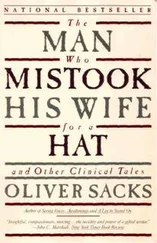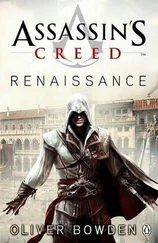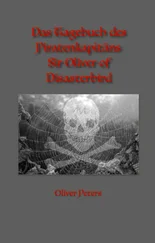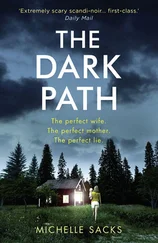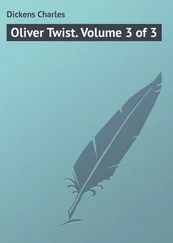Penfield described many examples of experiential seizures:
At operation it is usually quite clear that the evoked experiential response is a random reproduction of whatever composed the stream of consciousness during some interval of the patient’s past life.… It may have been a time of listening to music, a time of looking in at the door of a dance hall, a time of imagining the action of robbers from a comic strip … a time of lying in the delivery room at birth, a time of being frightened by a menacing man, a time of watching people enter the room with snow on their clothes.… It may have been a time of standing on the corner of Jacob and Washington, South Bend, Indiana.
Penfield’s notion of actual memories or experiences being reactivated has been disputed. We now know that memories are not fixed or frozen, like Proust’s jars of preserves in a larder, but are transformed, disassembled, reassembled, and recategorized with every act of recollection. 46 46 For Gowers and his contemporaries in the early twentieth century, memories were imprints in the brain (as for Socrates they were analogous to impressions made in soft wax) — imprints that could be activated by the act of recollection. It was not until the crucial studies of Frederic Bartlett at Cambridge in the 1920s and 1930s that this classical view could be disputed. Whereas Ebbinghaus and other early investigators had studied rote memory — how many digits could be remembered, for instance — Bartlett presented his subjects with pictures or stories and then questioned and requestioned them over a period of months. Their accounts of what they had seen or heard were somewhat different (and sometimes quite transformed) on each re-remembering. These experiments convinced Bartlett to think in terms not of a static thing called “memory,” but rather a dynamic process of “remembering.” He wrote: Remembering is not the re-excitation of innumerable fixed, lifeless and fragmentary traces. It is an imaginative reconstruction, or construction, built out of the relation of our attitude towards a whole active mass of organized past reactions or experience.… It is thus hardly ever really exact.
And yet, some memories do, seemingly, remain vivid, minutely detailed, and relatively fixed throughout life. This is especially so with traumatic memories or memories carrying an intense emotional charge and significance. Penfield was at pains, however, to emphasize that epileptic flashbacks seem to lack any such special qualities. 47 47 Penfield sometimes used the term “flashback” for experiential hallucinations. The term is also used in quite different contexts, as in post-traumatic flashbacks, where there are recurrent hallucinatory replayings of traumatic events. The term “flashback” is also used for a sudden, transient reexperiencing of a drug effect — suddenly feeling, for example, the effects of LSD, even though one has not taken it for months.
“It would be very difficult to imagine,” he wrote, “that some of the trivial incidents and songs recalled during stimulation or epileptic discharge could have any possible emotional significance to the patient, even if one is acutely aware of this possibility.” He felt that the flashbacks consisted of “random” segments of experience, fortuitously associated with a seizure focus.
Curiously, though Penfield described such a variety of experiential hallucinations, he made no reference to what we now call “ecstatic” seizures — seizures that produce feelings of ecstasy or transcendent joy, such as Dostoevsky described. Dostoevsky’s seizures started in childhood, but they became frequent only in his forties, after his return from exile in Siberia. In his occasional grand mal attacks, he would emit (his wife wrote) “a fearful cry, a cry that had nothing human about it,” and then fall to the floor, unconscious. Many of these attacks were preceded by a remarkable mystical or ecstatic aura — but sometimes there would be only the aura, without any subsequent convulsions or lack of consciousness. The first occurred one Easter Eve, as his friend Sophia Kowalewski wrote in her Childhood Recollections (Alajouanine quotes this in his paper on Dostoevsky’s epilepsy). Dostoevsky was talking with two friends about religion when a bell started to toll midnight. Suddenly he exclaimed, “God exists, He exists!” He later went into detail about the experience:
The air was filled with a big noise and I tried to move. I felt the heaven was going down upon the earth and that it had engulfed me. I have really touched God. He came into me myself, yes God exists, I cried, and I don’t remember anything else. You all, healthy people, he said, can’t imagine the happiness which we epileptics feel during the second or so before our fit.… I don’t know if this felicity lasts for seconds, hours or months, but believe me, for all the joys that life may bring, I would not exchange this one.
He gave similar descriptions on a number of other occasions, and endowed several of the characters in his novels with seizures akin to, and sometimes identical with, his own. One such involves Prince Myshkin in The Idiot :
During these moments as rapid as lightning, the impression of the life and the consciousness were in himself ten times more intense. His spirit and his heart were illuminated by an immense sense of light; all his emotions, all his doubts, all his anxiety calmed together to be changed into a sovereign serenity made up of lighted joy, harmony and hope; then, his reason was raised up to the understanding of the final cause.
There are also descriptions of ecstatic seizures in The Devils , The Brothers Karamazov , and The Insulted and the Injured , while in The Double there are descriptions of “forced thinking” and “dreamy states” almost identical with what Hughlings Jackson was describing at much the same time in his great neurological articles.
Over and above his ecstatic auras — which always seemed to Dostoevsky revelations of ultimate truth, direct and valid knowledge of God — there were remarkable and progressive changes in his personality throughout the later parts of his life, his time of greatest creativity. Théophile Alajouanine, a French neurologist, observed that these changes were clear when one compared Dostoevsky’s early, realistic works with the great, mystical novels he wrote in later life. Alajouanine suggested that “epilepsy had created in the person of Dostoevsky a ‘double man’ … a rationalist and a mystic; each having the better of the other according to the moment … [and] more and more the mystical one seems to have prevailed.”
It was this change, seemingly progressing even between Dostoevsky’s seizures (“interictally,” in neurological jargon), that especially fascinated the American neurologist Norman Geschwind, who wrote a number of papers on the subject in the 1970s and 1980s. He noted Dostoevsky’s increasingly obsessive preoccupation with morality and proper behavior, his growing tendency to “get embroiled in petty arguments,” his lack of humor, his relative indifference to sexuality, and, despite his high moral tone and seriousness, “a readiness to become angry on slight provocation.” Geschwind spoke of all this as an “interictal personality syndrome” (it is now called “Geschwind syndrome”). Patients with it often develop an intense preoccupation with religion (Geschwind referred to this as “hyper-religiosity”). They may also develop, like Stephen L., compulsive writing or unusually intense artistic or musical passions.
Whether or not an interictal personality syndrome develops — and it does not seem to be universal or inevitable in those who have temporal lobe epilepsy — there is no doubt that those who have ecstatic seizures may be profoundly moved by them, and even actively seek to have more such seizures. In 2003, Hansen Asheim and Eylert Brodtkorb, in Norway, published a study of eleven patients with ecstatic seizures; eight of them wished to experience their seizures again, and of these, five found ways to induce them. More than any other sort of seizure, ecstatic seizures may be felt as epiphanies or revelations of a deeper reality.
Читать дальше


